The Art of Home Staging: Transforming Spaces to Sell
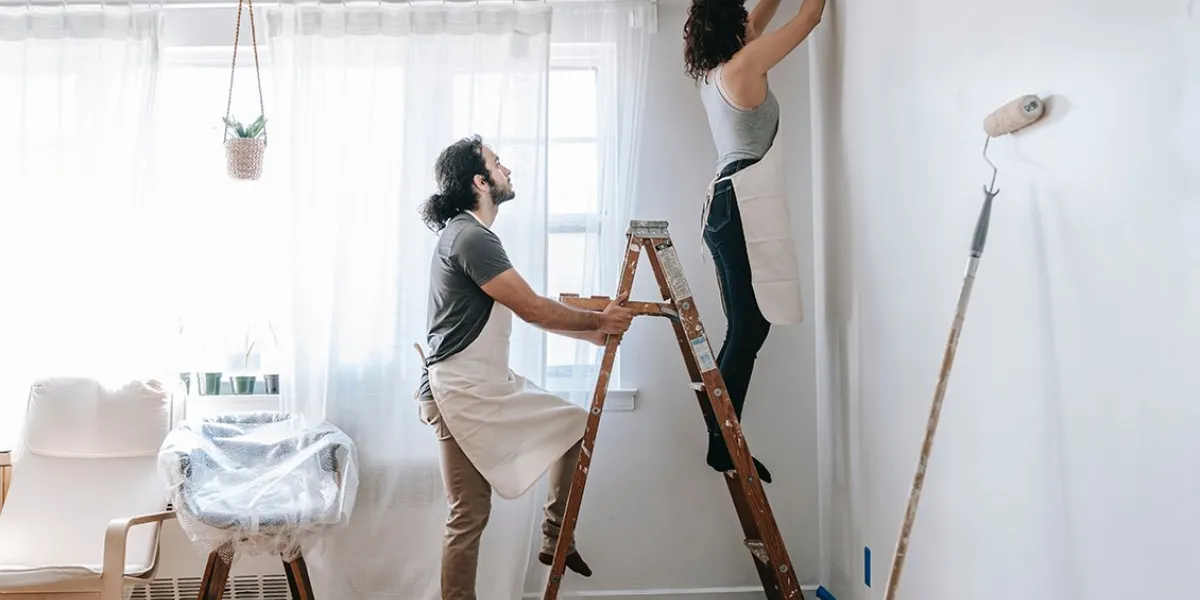
It’s All About Staging Your Property Home staging is an essential aspect of the real estate industry, aimed at enhancing a property’s appeal to potential buyers. The goal is to present the property in a way that makes it easy for buyers to envision themselves living there, thereby facilitating a quicker and often more profitable sale. Here’s a deeper look into this art:
Understanding Home Staging
Home staging involves strategically arranging furniture, decor, and other elements within a home to highlight its strengths and downplay any weaknesses. It’s about creating a neutral, inviting space that appeals to the broadest possible audience.
Key Elements of Home Staging
Decluttering and Depersonalizing: Removing personal items and excess belongings to create a clean, open space.
Neutral Color Palette: Using neutral colors on walls and furnishings to create a calm and inviting environment.
Furniture Placement: Arranging furniture to enhance the flow of the room and make spaces appear larger.
Lighting: Ensuring adequate and appealing lighting to make spaces look bright and welcoming.
Accessorizing: Adding tasteful decor items that enhance the aesthetic appeal without overwhelming the space.
The Transformation Process
Initial Assessment: A professional stager will evaluate the home to identify its strengths and areas for improvement.
Planning: Developing a staging plan tailored to the specific property, considering the target market and current trends.
Execution: Implementing the plan, which may include bringing in new furniture and decor, rearranging existing items, and making minor repairs or updates.
Final Touches: Adding finishing touches such as fresh flowers, new towels, or appealing artwork to create a polished look.
Benefits of Home Staging
Increased Appeal: Staged homes tend to attract more potential buyers because they look well-maintained and move-in ready.
Faster Sale: Homes that are staged typically spend less time on the market compared to non-staged homes.
Higher Offers: Buyers are often willing to pay more for a home that looks attractive and ready to live in.
Competitive Edge: In a crowded market, a well-staged home stands out among the competition.
Mastering the art of home staging can significantly impact the success of selling a property. By transforming spaces to highlight their best features and creating an inviting atmosphere, sellers can enhance their home’s marketability and achieve their desired sale outcomes. Whether done professionally or as a DIY project, effective staging is a powerful tool in the real estate arsenal.
Why Staging Your Property is Crucial for a Quick Sale
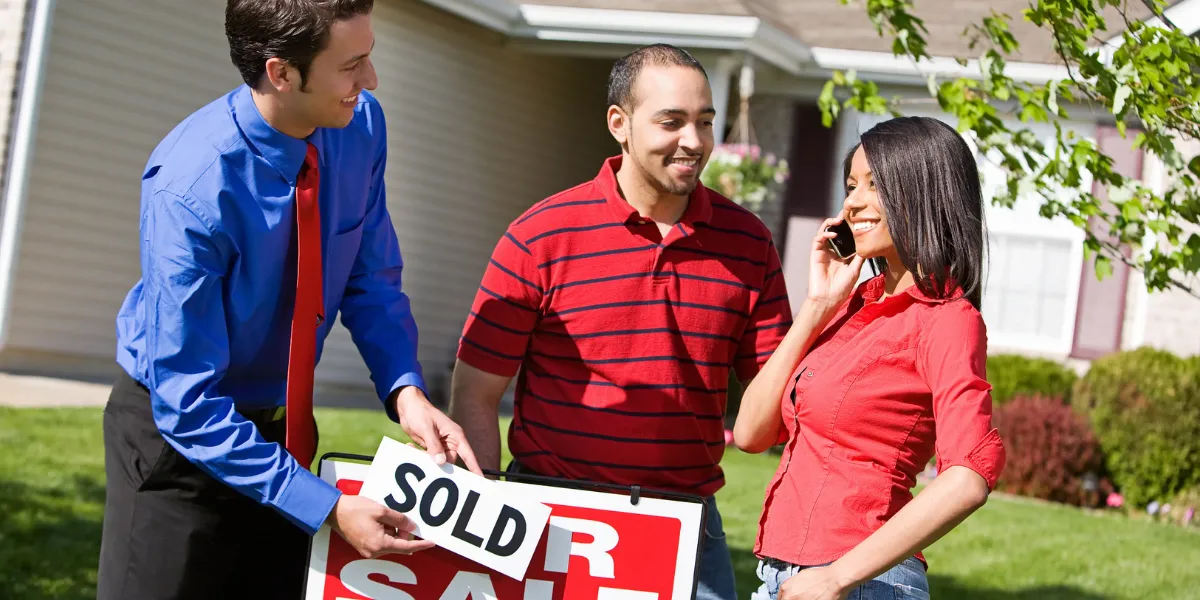
Staging a property has become a pivotal strategy in real estate for sellers aiming to expedite the sale of their home. Here’s an in-depth look at why staging is essential for achieving a quick sale:
Creating an Immediate Impact
First Impressions Matter: Buyers often decide within seconds of entering a property whether they are interested. A well-staged home creates a strong first impression, enticing buyers to explore further.
Curb Appeal: Staging starts from the outside. A well-maintained exterior invites buyers in and sets the tone for what they can expect inside.
Highlighting the Home’s Potential
Maximizing Space: Staging helps to showcase the full potential of each room, making spaces appear larger and more functional.
Defining Spaces: Proper staging defines the purpose of each area, helping buyers visualize how they can use the space to fit their lifestyle.
Emotional Connection
Neutralizing the Space: Staging often involves depersonalizing the home so buyers can imagine themselves living there, rather than seeing it as someone else’s home.
Creating Ambiance: The right furniture, decor, and lighting can create a welcoming atmosphere that resonates emotionally with buyers, making them feel at home.
Competitive Advantage
Standing Out in the Market: In a competitive real estate market, a staged home stands out among other listings, attracting more interest and showings.
Professional Presentation: Staged homes often look more polished and professional in online listings, which is where most buyers begin their search.
Accelerating the Sale Process
Shorter Time on Market: Studies have shown that staged homes spend less time on the market compared to non-staged homes. This is crucial for sellers looking to move quickly.
Faster Decision Making: Buyers are more likely to make quicker decisions on a staged home because it provides a clearer picture of the property’s potential.
Financial Benefits
Higher Sale Price: Staged homes often sell for a higher price because they appear well-maintained and move-in ready, which can justify a higher asking price.
Cost-Effective Investment: The cost of staging can often be recouped by the higher sale price and quicker sale, making it a cost-effective investment for sellers.
Practical Steps for Staging
Decluttering: Removing unnecessary items to create a clean and organized look.
Deep Cleaning: Ensuring the home is spotless from top to bottom.
Repairs and Updates: Fixing minor issues and possibly updating fixtures or paint to give the home a fresh, modern look.
Furniture Arrangement: Positioning furniture to enhance flow and showcase the functionality of the space.
Adding Decor: Using tasteful decor items to add warmth and style without overwhelming the space.
Staging a property is a critical step for sellers aiming to achieve a quick sale. By creating a strong first impression, highlighting the home’s potential, and giving it a competitive edge, staging can significantly speed up the selling process and enhance the overall appeal of the property. Investing in staging is a strategic move that pays off by attracting more buyers, shortening the time on the market, and often resulting in a higher sale price.
Maximizing Property Value: The Power of Professional Staging
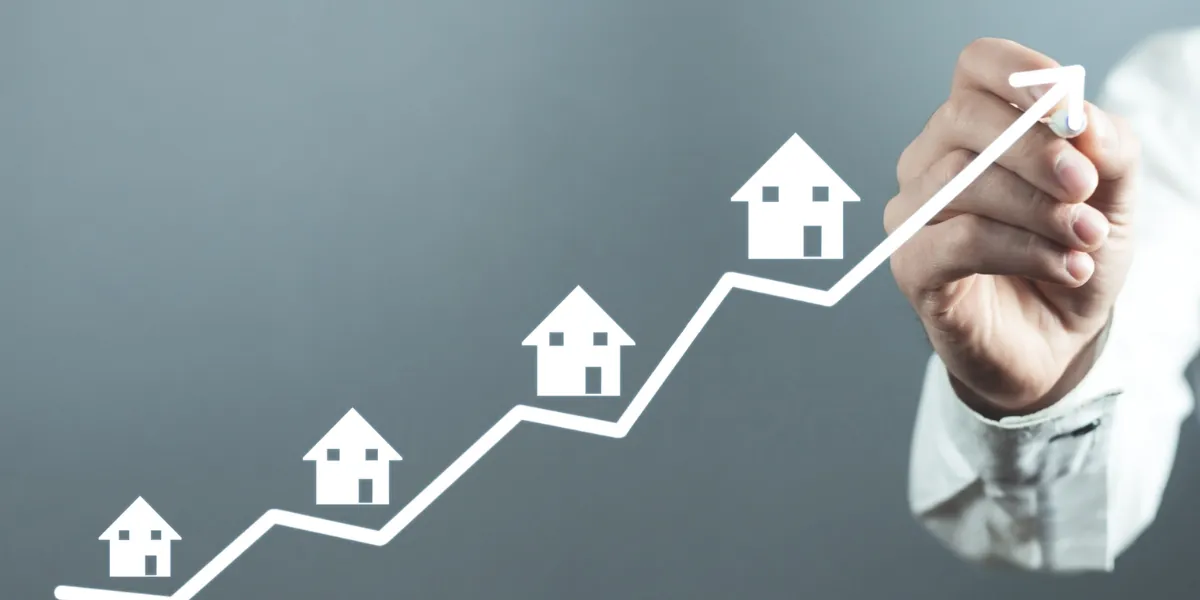
Professional home staging is a strategic tool that significantly enhances a property’s market value. Here’s an in-depth look at how professional staging can maximize property value:
Understanding Professional Staging
Professional staging involves hiring experts to prepare a home for sale. These professionals use their skills to create an appealing and inviting environment that attracts potential buyers.
Enhancing Visual Appeal
Aesthetic Excellence: Professional stagers use their expertise to decorate homes in a way that is visually pleasing. They know how to use color, lighting, and decor to highlight the home’s best features.
Quality Presentation: High-quality furniture and decor items used in staging can give the home a luxurious feel, which can justify a higher asking price.
Creating a Marketable Product
Targeting the Right Audience: Professionals understand market trends and buyer preferences. They tailor the staging to appeal to the specific demographic likely to purchase the home.
Neutral and Versatile Designs: Stagers often use neutral colors and versatile designs that appeal to a wide range of buyers, making it easier for them to imagine living in the space.
Highlighting Space and Functionality
Optimal Furniture Arrangement: Professional stagers arrange furniture to maximize space and flow, making rooms appear larger and more functional.
Defining Spaces: Staging clearly defines each area’s purpose, helping buyers understand how they can use the space effectively.
Psychological Impact on Buyers
Emotional Connection: A well-staged home creates an emotional connection with buyers, making them more likely to place a higher value on the property.
Move-In Readiness: Staged homes give the impression of being move-in ready, reducing buyer concerns about additional costs or effort post-purchase.
Increasing Perceived Value
Boosting Online Presence: Professionally staged homes photograph better, making online listings more attractive and generating more interest.
Impressive Showings: Staged homes make a stronger impact during showings, often leading to higher offers and quicker sales.
Financial Benefits
Higher Sale Price: Staged homes frequently sell for more than non-staged homes. Buyers are often willing to pay a premium for a home that looks ready to live in.
Faster Sales: Staged homes typically spend less time on the market, reducing the carrying costs for sellers, such as mortgage payments, utilities, and taxes.
Professional Staging Process
Consultation: A stager evaluates the property and creates a customized staging plan.
Implementation: The stager brings in furniture, decor, and other elements to execute the plan. This may involve rearranging existing items, making minor repairs, or even painting.
Final Touches: Small details like fresh flowers, art pieces, and stylish accessories are added to complete the look.
Case Studies and Evidence
Market Studies: Research consistently shows that staged homes sell faster and for higher prices compared to non-staged homes.
Real-World Examples: Many real estate agents have anecdotal evidence of homes that were on the market for months selling quickly after being professionally staged.
Professional staging is a powerful tool for maximizing property value. By enhancing visual appeal, creating a marketable product, highlighting space and functionality, and increasing perceived value, staging can significantly boost the sale price and reduce the time a home spends on the market. Investing in professional staging is a smart strategy for sellers looking to achieve the best possible outcome.
Staging Strategies: Tips to Make Your Home Irresistible
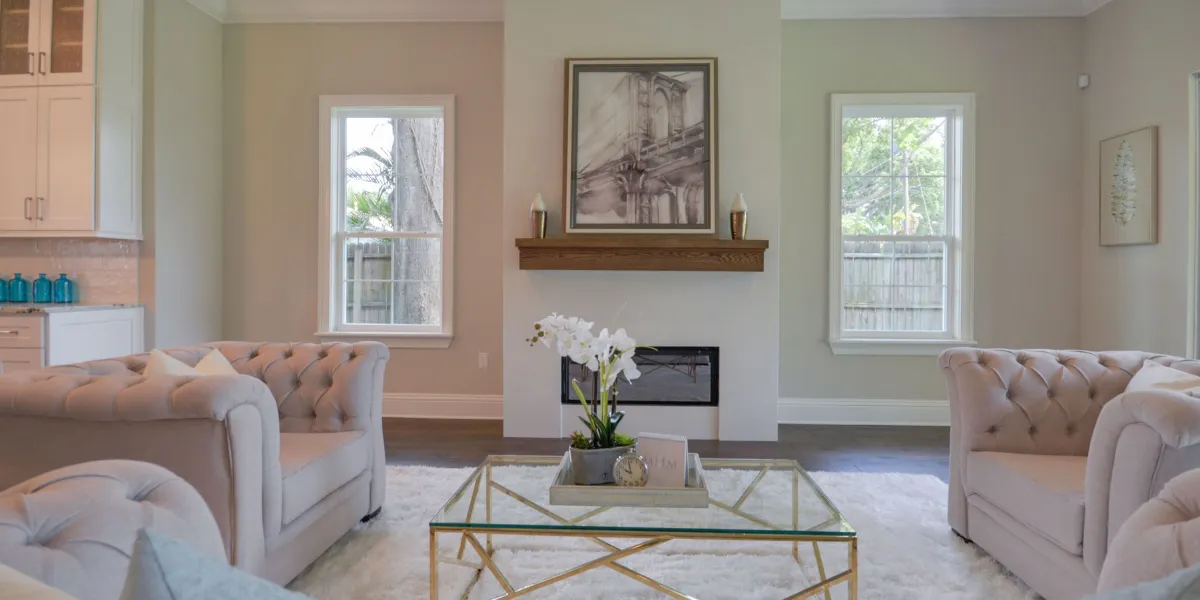
Staging a home effectively can make it highly appealing to potential buyers, significantly increasing the chances of a quick and profitable sale. Here’s a detailed look at key staging strategies and tips to make your home irresistible:
Declutter and Depersonalize
Remove Excess Items: Clear out unnecessary items to make the space look larger and more open. This includes decluttering countertops, shelves, and closets.
Depersonalize: Take down personal photos, memorabilia, and personal items. This helps buyers envision the home as their own rather than feeling like they are intruding into someone else’s space.
Deep Cleaning
Spotless Environment: Ensure every part of the house is clean, including floors, windows, and surfaces. A sparkling clean home feels more inviting and well-maintained.
Fresh Smells: Eliminate any odors by using air fresheners, baking cookies before showings, or placing scented candles strategically.
Neutral Color Palette
Paint: Use neutral colors for walls and decor to create a blank canvas that appeals to a wide range of buyers.
Consistent Theme: Maintain a cohesive color scheme throughout the house to create a harmonious and relaxing environment.
Furniture Arrangement
Maximize Space: Arrange furniture to create an open and spacious feel. Avoid overcrowding rooms with too much furniture.
Functional Layouts: Ensure that each room’s layout highlights its functionality and flow. For example, create a cozy reading nook in the living room or a home office space in a spare bedroom.
Lighting
Natural Light: Make the most of natural light by opening curtains and blinds. Clean windows to allow maximum light penetration.
Artificial Lighting: Use a mix of ambient, task, and accent lighting to brighten up the space. Replace any outdated or dim light fixtures.
Curb Appeal
Landscaping: Keep the lawn mowed, hedges trimmed, and garden beds weed-free. Add potted plants or flowers for a pop of color.
Entrance: Ensure the front door is clean and inviting. Consider painting it a welcoming color and adding a new doormat or wreath.
Highlight Key Features
Showcase Unique Elements: Draw attention to special features such as a fireplace, built-in bookshelves, or a scenic view with strategic furniture placement and lighting.
Use Mirrors: Place mirrors to reflect light and make spaces appear larger.
Minimal Yet Stylish Decor
Tasteful Accessories: Use a few stylish and modern decor items like vases, artwork, and cushions to add personality without overwhelming the space.
Seasonal Touches: Incorporate seasonal decor to make the home feel current and inviting, like fresh flowers in spring or cozy blankets in winter.
Kitchens and Bathrooms
Update Fixtures: Replace outdated faucets, cabinet hardware, and light fixtures for a modern look.
Clean and Tidy: Keep countertops clear, and ensure appliances are spotless. In bathrooms, use fresh towels and add a few luxury items like fancy soap or a plant.
Bedrooms as Retreats
Comfortable and Inviting: Use high-quality bedding and pillows to create a cozy and comfortable atmosphere.
Clutter-Free Closets: Organize closets to show ample storage space, and keep them half-full to suggest roominess.
Final Touches
Fresh Flowers: Place fresh flowers in key areas like the entryway, dining room, and living room for a touch of elegance and warmth.
Homey Atmosphere: Create a welcoming ambiance with subtle background music, a bowl of fresh fruit, or a pot of coffee brewing during showings.
Effective staging strategies can make a significant difference in how potential buyers perceive your home. By following these tips, you can create an irresistible environment that highlights the best features of your property, making it more appealing and likely to sell quickly and at a higher price. Staging is an investment in presenting your home in its best possible light, ultimately making it irresistible to buyers.
The Ultimate Guide to Staging Your Home for Sale
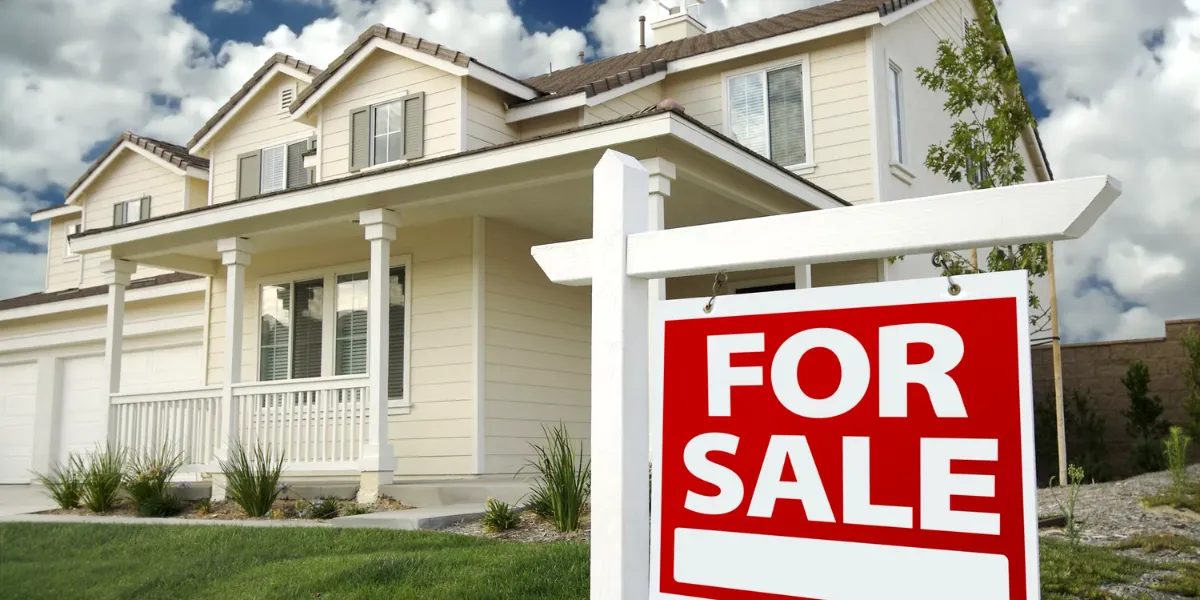
Staging your home for sale is a crucial step to attract potential buyers and secure a quick, profitable sale. This comprehensive guide covers everything you need to know to stage your home effectively:
Planning and Preparation
Understand Your Market: Research your local real estate market to understand buyer preferences and trends. Tailor your staging to meet these expectations.
Set a Budget: Determine how much you are willing to spend on staging. This can include costs for repairs, new decor, professional stagers, or rental furniture.
Create a Timeline: Plan your staging activities around your listing schedule. Allow ample time for decluttering, cleaning, repairs, and actual staging.
Declutter and Depersonalize
Clear Excess Items: Remove unnecessary items to create a clean and spacious look. Focus on decluttering surfaces, closets, and storage areas.
Depersonalize the Space: Remove personal items such as family photos, unique artwork, and personal collections. This helps potential buyers envision themselves in the home.
Deep Cleaning
Comprehensive Cleaning: Ensure every corner of the home is spotless, including floors, windows, and appliances. Consider hiring professional cleaners if necessary.
Eliminate Odors: Use air purifiers, scented candles, or fresh flowers to ensure the home smells pleasant. Avoid strong fragrances that may be off-putting.
Neutralize and Refresh
Neutral Color Palette: Paint walls in neutral tones like beige, gray, or white to appeal to a broader audience. Neutral colors create a calm and inviting atmosphere.
Update Decor: Replace dated decor with modern, stylish items that enhance the home’s appeal without overwhelming the space.
Optimize Furniture Arrangement
Maximize Space: Arrange furniture to create a spacious and functional flow. Remove any unnecessary furniture that makes rooms look crowded.
Define Each Room: Clearly define the purpose of each room. For instance, set up a home office in a spare bedroom or a reading nook in a corner of the living room.
Enhance Lighting
Natural Light: Maximize natural light by opening curtains and blinds. Clean windows to ensure they let in as much light as possible.
Artificial Lighting: Use a combination of ambient, task, and accent lighting to brighten up the space. Replace outdated fixtures with modern, energy-efficient options.
Boost Curb Appeal
Landscaping: Maintain the lawn, trim bushes, and plant flowers to create an inviting exterior. Consider adding mulch to flower beds for a fresh look.
Front Entrance: Make sure the front door is clean and welcoming. Paint the door if needed, add a new doormat, and consider placing potted plants on either side.
Focus on Key Areas
Kitchens and Bathrooms: These rooms are critical to buyers. Ensure they are spotless, update fixtures if needed, and add small touches like fresh towels and stylish soap dispensers.
Living and Dining Areas: Arrange furniture to create a warm and inviting atmosphere. Use stylish but neutral decor to enhance these spaces.
Bedrooms as Retreats
Comfortable Bedding: Use high-quality bedding and pillows to create a luxurious feel. Stick to neutral colors and simple patterns.
Organized Closets: Keep closets tidy and organized to showcase ample storage space. Consider removing half the items to make closets appear larger.
Final Touches
Fresh Flowers and Greenery: Place fresh flowers or plants in key areas to add a touch of nature and freshness.
Set the Mood: Create a welcoming ambiance with soft background music, a bowl of fresh fruit on the kitchen counter, or a pot of coffee brewing during showings.
By following this ultimate guide to staging your home for sale, you can transform your property into an attractive and inviting space that appeals to potential buyers. Staging not only enhances the visual appeal of your home but also helps buyers envision themselves living there, increasing the likelihood of a quick and profitable sale. Investing time and effort into effective staging is a strategic move that pays off in the competitive real estate market.
Top Staging Techniques to Enhance Your Property’s Appeal
Enhancing your property’s appeal through effective staging can make a significant difference in attracting potential buyers and achieving a quick sale. Here are the top staging techniques to make your home stand out:
Declutter and Organize
Remove Clutter: Clear out excess items from all rooms, including closets, shelves, and countertops. A clutter-free home looks more spacious and inviting.
Streamline Furniture: Reduce the number of furniture pieces to create an open and airy feel. Ensure each room has a clear and purposeful layout.
Clean Thoroughly
Deep Clean: Clean every part of the home, including floors, carpets, windows, and appliances. A clean home looks well-maintained and appealing.
Address Odors: Eliminate any unpleasant smells by using air fresheners, cleaning carpets, and ensuring proper ventilation.
Use Neutral Colors
Neutral Walls: Paint walls in neutral shades like beige, gray, or soft white. Neutral colors appeal to a broader audience and make rooms feel larger and brighter.
Consistent Palette: Maintain a consistent color scheme throughout the home to create a cohesive and harmonious look.
Enhance Lighting
Maximize Natural Light: Open curtains and blinds to let in as much natural light as possible. Clean windows to ensure they are clear and bright.
Add Lighting Fixtures: Use additional lighting such as floor lamps, table lamps, and under-cabinet lights to brighten dark areas and create a warm ambiance.
Furniture Arrangement
Create Flow: Arrange furniture to enhance the flow of each room. Ensure there is enough space to move around comfortably.
Define Spaces: Use furniture to clearly define different areas, such as a reading nook in the living room or a home office in a spare bedroom.
Add Inviting Decor
Stylish Accessories: Use tasteful decor items like vases, throw pillows, and artwork to add personality without overwhelming the space.
Seasonal Touches: Incorporate seasonal decor to make the home feel current and cozy. For example, use fresh flowers in spring or warm throws in winter.
Focus on Key Areas
Kitchens and Bathrooms: These rooms are critical for buyers. Ensure they are spotless, update fixtures if needed, and add small touches like fresh towels and stylish soap dispensers.
Living and Dining Areas: Arrange furniture to create an inviting atmosphere. Use stylish but neutral decor to enhance these spaces.
Boost Curb Appeal
Landscaping: Maintain the lawn, trim bushes, and plant flowers to create an inviting exterior. Consider adding mulch to flower beds for a fresh look.
Front Entrance: Make sure the front door is clean and welcoming. Paint the door if needed, add a new doormat, and consider placing potted plants on either side.
Create a Cozy Bedroom
Comfortable Bedding: Use high-quality bedding and pillows to create a luxurious feel. Stick to neutral colors and simple patterns.
Tidy Closets: Keep closets organized to showcase ample storage space. Consider removing half the items to make closets appear larger.
Add Final Touches
Fresh Flowers and Greenery: Place fresh flowers or plants in key areas to add a touch of nature and freshness.
Set the Mood: Create a welcoming ambiance with soft background music, a bowl of fresh fruit on the kitchen counter, or a pot of coffee brewing during showings.
By applying these top staging techniques, you can significantly enhance your property’s appeal. Staging not only improves the visual attractiveness of your home but also helps buyers envision themselves living there, increasing the likelihood of a quicker and more profitable sale. Effective staging is an investment that pays off by making your property more appealing and competitive in the real estate market.
Staging Secrets: How to Make Your Property Stand Out
Staging a property effectively can transform it from ordinary to extraordinary, making it highly attractive to potential buyers. Here are the essential secrets to make your property stand out in the competitive real estate market:
Create a Strong First Impression
Curb Appeal: Ensure the exterior of your home is inviting. Maintain the lawn, trim bushes, plant colorful flowers, and ensure the front entrance is clean and welcoming. A freshly painted front door and new doormat can make a significant impact.
Entryway: The entryway sets the tone for the rest of the home. Keep it clean and clutter-free, add a welcoming rug, and consider placing a mirror to reflect light and make the space feel larger.
Maximize Space and Flow
Declutter Thoroughly: Remove unnecessary items from all rooms, closets, and storage areas. A clutter-free home looks more spacious and inviting.
Furniture Arrangement: Arrange furniture to enhance the flow of each room. Ensure there is enough space for easy movement and that each room has a clear, defined purpose.
Use Light and Color Effectively
Maximize Natural Light: Open curtains and blinds to let in as much natural light as possible. Clean windows to ensure they sparkle and allow maximum light penetration.
Neutral Color Palette: Use neutral colors for walls and decor to create a calm, inviting atmosphere. Neutral tones appeal to a broader audience and make spaces feel larger and brighter.
Highlight Key Features
Showcase Unique Elements: Highlight special features such as fireplaces, built-in shelves, or scenic views. Use furniture and decor to draw attention to these features.
Use Mirrors Strategically: Place mirrors to reflect light and make rooms appear larger. Mirrors can also highlight beautiful views or focal points within the home.
Update and Refresh
Modernize Fixtures: Update outdated light fixtures, faucets, and cabinet hardware. These small changes can give the home a fresh, modern look.
Fresh Paint: A new coat of paint can transform a space. Stick to neutral colors to create a clean and appealing look.
Create Inviting Spaces
Living Areas: Arrange furniture to create a cozy and inviting atmosphere. Use stylish yet neutral decor to enhance the space without overwhelming it.
Bedrooms: Make bedrooms look comfortable and luxurious with high-quality bedding and pillows. Keep closets organized and tidy to showcase ample storage space.
Focus on Kitchens and Bathrooms
Kitchens: Ensure the kitchen is spotless, and countertops are clear of clutter. Update appliances if necessary, and add small touches like a bowl of fresh fruit or a vase of flowers.
Bathrooms: Clean thoroughly and update fixtures if needed. Use fresh towels, stylish soap dispensers, and a few decorative items to create a spa-like feel.
Add Final Touches
Fresh Flowers and Greenery: Place fresh flowers or plants in key areas to add a touch of nature and vibrancy.
Set the Mood: Create a welcoming ambiance with soft background music, pleasant scents, and subtle lighting. This can make the home feel warm and inviting.
By applying these staging secrets, you can make your property stand out in the competitive real estate market. Effective staging highlights the best features of your home, creates a welcoming atmosphere, and helps potential buyers envision themselves living in the space. These strategies not only enhance the visual appeal of your property but also increase the likelihood of a quick and profitable sale. Staging is an investment that pays off by making your property more attractive and memorable to buyers.
From Drab to Fab: The Benefits of Home Staging
Home staging can transform a drab, uninviting space into a fabulous, appealing property that attracts potential buyers and leads to a quicker sale at a higher price. Here are the key benefits of home staging:
Creating a Strong First Impression
Immediate Appeal: A staged home creates an immediate positive impact, encouraging buyers to explore further. First impressions are critical, and a well-staged home captivates buyers right from the entrance.
Enhanced Curb Appeal: Staging begins at the curb, ensuring the exterior is clean, well-maintained, and inviting. This sets the tone for what buyers can expect inside.
Highlighting the Home’s Best Features
Showcasing Potential: Staging helps highlight the property’s best features, such as architectural details, spacious rooms, and natural light. This allows buyers to see the full potential of the home.
Room Definition: Staging clearly defines each room’s purpose, making it easier for buyers to envision how they can use the space effectively.
Making Spaces Look Larger and More Functional
Maximizing Space: Proper furniture arrangement and decluttering make rooms appear larger and more functional. Buyers can see how their furniture and belongings will fit into the space.
Creating Flow: Staging enhances the flow of the home, ensuring that each room transitions smoothly into the next, creating a harmonious living environment.
Emotional Connection
Creating Warmth: Staging adds warmth and character to a home, making it feel inviting and comfortable. This emotional connection is crucial in helping buyers imagine themselves living in the space.
Depersonalizing: By removing personal items and decor, staging allows buyers to visualize the home as their own, rather than feeling like they are intruding into someone else’s space.
Competitive Advantage
Standing Out: In a competitive real estate market, a staged home stands out from other listings. This attracts more interest and showings, increasing the chances of a quicker sale.
Professional Presentation: Staged homes often look more polished and professional in photographs, making them more appealing in online listings where most buyers begin their search.
Financial Benefits
Higher Sale Price: Staged homes often sell for a higher price compared to non-staged homes. Buyers are willing to pay more for a home that looks move-in ready and well-maintained.
Faster Sale: Staged homes typically spend less time on the market, reducing the carrying costs for sellers, such as mortgage payments, utilities, and taxes.
Practical Benefits
Highlighting Updates: Staging can draw attention to recent updates and renovations, showcasing the home’s modern features and justifying a higher asking price.
Addressing Buyer Concerns: Staged homes appear well-cared-for, reducing buyer concerns about potential maintenance issues or additional costs post-purchase.
Case Studies and Evidence
Research Findings: Studies consistently show that staged homes sell faster and for higher prices than non-staged homes, demonstrating the tangible benefits of staging.
Real-World Examples: Many real estate agents have success stories of homes that were transformed through staging, leading to quick sales and satisfied sellers.
Transforming a home from drab to fab through staging offers numerous benefits. It creates a strong first impression, highlights the home’s best features, makes spaces look larger and more functional, and establishes an emotional connection with buyers. Staging also provides a competitive advantage, leading to higher sale prices and faster sales. By investing in home staging, sellers can significantly enhance the appeal and marketability of their property, ultimately achieving a successful and profitable sale.
Boost Your Home’s Market Potential with Effective Staging
Effective home staging can significantly enhance your property’s market potential, making it more attractive to potential buyers and increasing the chances of a quick and profitable sale. Here’s how:
Enhancing Visual Appeal
Aesthetic Improvement: Staging transforms a home into a visually appealing and inviting space. Professional stagers know how to use color, furniture, and decor to highlight the property’s strengths and downplay its weaknesses.
Neutral Tones: Using neutral colors and modern decor helps create a clean, fresh look that appeals to a broader audience, making the home feel move-in ready.
Creating a Strong First Impression
Curb Appeal: Effective staging starts outside with well-maintained landscaping, a clean facade, and a welcoming entrance. This sets a positive tone for potential buyers before they even step inside.
Inviting Entryway: The entryway should be clean and decluttered, with subtle decor that makes a strong, welcoming statement.
Maximizing Space and Functionality
Furniture Arrangement: Proper arrangement of furniture can make rooms appear larger and more functional. Stagers strategically place furniture to enhance flow and make the most of the available space.
Defined Spaces: Staging clearly defines each area’s purpose, whether it’s a cozy reading nook, a functional office space, or a family-friendly living area. This helps buyers envision how they can use the space effectively.
Emotional Connection
Warm and Inviting Atmosphere: Staging creates a warm, inviting atmosphere that makes buyers feel at home. This emotional connection is crucial in helping them imagine themselves living in the space.
Depersonalization: Removing personal items like family photos and unique decor helps buyers see the home as a blank canvas where they can create their own memories.
Highlighting Key Features
Showcase Unique Elements: Staging draws attention to the home’s unique features, such as fireplaces, built-in shelves, or stunning views. These focal points can be enhanced with strategic lighting and decor.
Quality Upgrades: Any recent upgrades or renovations should be highlighted through staging. Modern fixtures, updated appliances, and new flooring are all showcased to their best advantage.
Increasing Perceived Value
Professional Presentation: Staged homes often look more polished and professional in photographs and during showings. This can make the property stand out in online listings and attract more interest.
Move-In Ready Appeal: Buyers are often willing to pay more for a home that looks ready to move into without needing immediate updates or repairs.
Competitive Edge
Standing Out: In a crowded real estate market, staging helps a home stand out from similar properties. A well-staged home is more memorable and appealing to potential buyers.
Faster Sales: Staged homes typically sell faster than non-staged homes. The appealing presentation can lead to quicker offers and reduce the time the property spends on the market.
Financial Benefits
Higher Sale Price: Homes that are effectively staged often sell for higher prices. Buyers perceive them as being of higher value due to the professional and inviting presentation.
Cost-Effective Investment: The cost of staging is often offset by the increased sale price and reduced time on the market, making it a smart investment for sellers.
Effective staging is a powerful tool for boosting your home’s market potential. By enhancing visual appeal, creating a strong first impression, maximizing space and functionality, and fostering an emotional connection with buyers, staging can significantly increase the attractiveness and perceived value of your property. This competitive edge often results in faster sales and higher sale prices, making staging a worthwhile investment for any home seller.
Staging Your Property: A Key Step in the Selling Process
Staging your property is a crucial step in the selling process that can significantly impact the outcome of your sale. Here’s why staging is considered essential:
First Impressions Matter
Instant Appeal: Potential buyers form an impression of your home within seconds of walking through the door. Staging ensures that their first impression is positive and memorable.
Curb Appeal: Staging begins outside, with attention to landscaping, exterior maintenance, and an inviting entrance, setting the stage for a positive experience.
Highlighting the Home’s Potential
Optimizing Space: Staging allows you to showcase the full potential of your property by arranging furniture and decor to maximize space and functionality.
Emphasizing Features: Professional staging draws attention to your home’s unique features, such as architectural details, focal points, or scenic views, helping buyers envision themselves living there.
Creating Emotional Connection
Warm and Welcoming Atmosphere: Staging creates a welcoming ambiance that makes buyers feel at home. This emotional connection can be a powerful factor in their decision-making process.
Neutralizing Personalization: By depersonalizing the space and removing personal items, staging helps buyers visualize themselves living in the home, making it easier for them to imagine their own lives there.
Competitive Advantage
Standing Out: In a competitive real estate market, a staged home stands out among other listings, attracting more attention and interest from potential buyers.
Professional Presentation: Staged homes often photograph better and show better in person, giving them a competitive edge over non-staged properties.
Accelerating the Sales Process
Shorter Time on Market: Staged homes tend to sell faster than non-staged homes, reducing the time and inconvenience of having your property on the market.
Faster Decision-Making: Buyers are more likely to make quick decisions on a staged property because they can see themselves living there, leading to faster offers and negotiations.
Financial Benefits
Higher Sale Price: Staged homes often sell for a higher price than non-staged homes, as buyers perceive them to be more valuable and desirable.
Maximizing Return on Investment: The cost of staging is typically recouped through a higher sale price and shorter time on the market, making it a worthwhile investment for sellers.
Practical Considerations
Staging Consultation: A professional stager can provide valuable advice on how to best showcase your property’s strengths and minimize its weaknesses.
Implementation: From decluttering and depersonalizing to rearranging furniture and adding decor, the staging process transforms your home into a show-ready masterpiece.
Staging your property is a key step in the selling process that can make a significant difference in the outcome of your sale. By creating a positive first impression, highlighting your home’s potential, fostering an emotional connection with buyers, and gaining a competitive edge in the market, staging sets the stage for a successful and profitable sale. Whether you’re selling a modest starter home or a luxury estate, staging is an essential investment that maximizes your property’s appeal and ensures a smoother, more lucrative selling process.
Click here for more visited Posts!

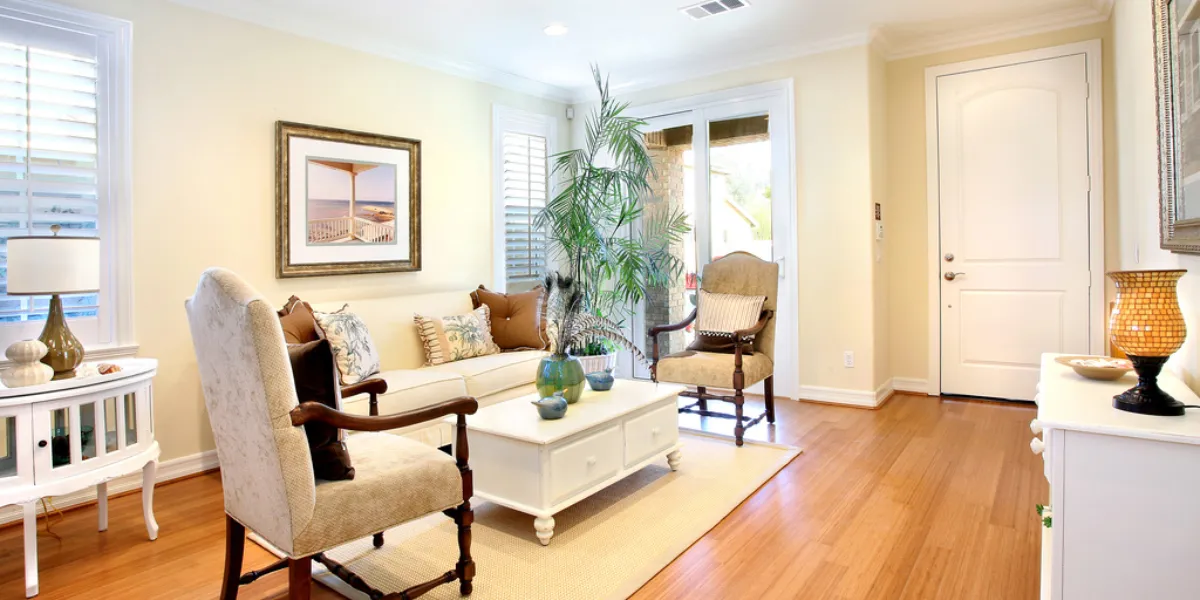
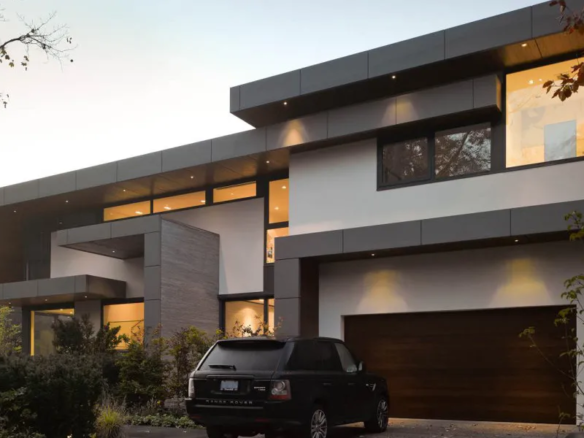
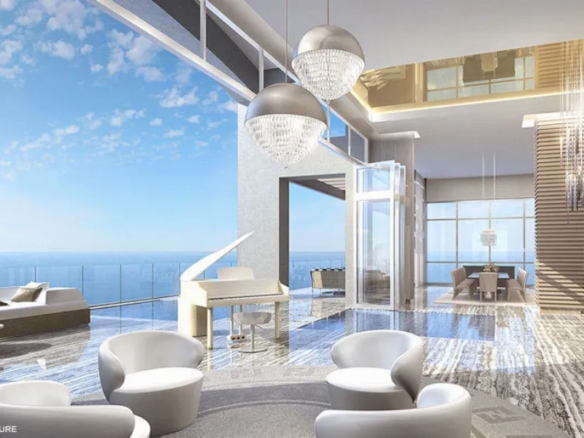
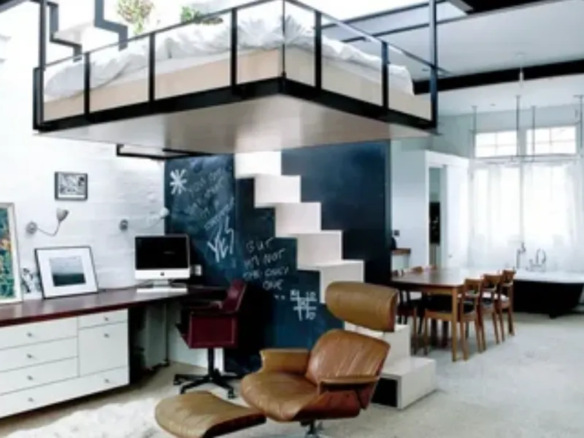
Join The Discussion